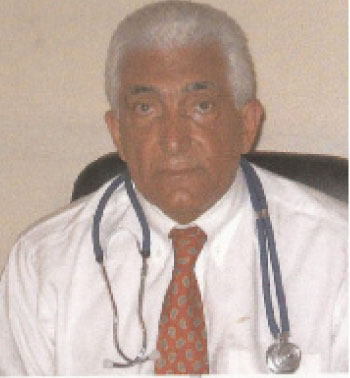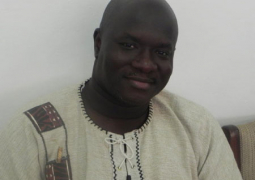
Breast cancer is by far the most common cancer in women worldwide, both in the developed and developing countries. In low- and middle-income countries the incidence has been rising up steadily in the last years due to increase in life expectancy, increase urbanization and adoption of western lifestyles.
Currently there is not sufficient knowledge on the causes of breast cancer; therefore, early detection of the disease remains the cornerstone of breast cancer control. When breast cancer is detected early, and if adequate diagnosis and treatment are available, there is a good chance that breast cancer can be cured. If detected late, however, curative treatment is often no longer an option. In such cases, palliative care to relief the suffering of patients and their families is needed.
The majority of deaths (269 000) occur in low- and middle-income countries, where most women with breast cancer are diagnosed in late stages due mainly to lack of awareness on early detection and barriers to health services.
WHO promotes comprehensive breast cancer control programmes as part of national cancer control plans. The recommended early detection strategies for low- and middle-income countries are awareness of early signs and symptoms and screening by clinical breast examination in demonstration areas. Mammography screening is very costly and is feasible only in countries with good health infrastructure that can afford a long-term programme.
Dr Hassan Azadeh, our health adviser and a senior lecturer at the University of the Gambia and a senior consultant in Obstetrics & Gynaecology is this week focusing on the diagnosis, risk factors, diagnose and the treatment’s facilities in the Gambia among others.
What is breast cancer?
Breast cancer is an uncontrolled growth of breast cells. To better understand breast cancer, it helps to understand how any cancer can develop.
Cancer occurs as a result of mutations, or abnormal changes, in the genes responsible for regulating the growth of cells and keeping them healthy. The genes are in each cell’s nucleus, which acts as the “control room” of each cell. Normally, the cells in our bodies replace themselves through an orderly process of cell growth: healthy new cells take over as old ones die out. But over time, mutations can “turn on” certain genes and “turn off” others in a cell. That changed cell gains the ability to keep dividing without control or order, producing more cells just like it and forming a tumour.
A tumour can be benign (not dangerous to health) or malignant (has the potential to be dangerous). Benign tumours are not considered cancerous: their cells are close to normal in appearance, they grow slowly, and they do not invade nearby tissues or spread to other parts of the body. Malignant tumours are cancerous. Left unchecked, malignant cells eventually can spread beyond the original toumour to other parts of the body.
The term “breast cancer” refers to a malignant toumour that has developed from cells in the breast. Usually breast cancer either begins in the cellswhich are the milk-producing glands, or the ducts, the passages that drain milk from the lobules to the nipple. Less commonly, breast cancer can begin in the tissues, which include the fatty and fibrous connective tissues of the breast.
Over time, cancer cells can invade nearby healthy breast tissue and make their way into the underarm lymph nodes, small organs that filter out foreign substances in the body. If cancer cells get into the lymph nodes, they then have a pathway into other parts of the body. The breast cancer’s stage refers to how far the cancer cells have spread beyond the original tumor (see the table for more information).
Breast cancer is always caused by a genetic abnormality (a “mistake” in the genetic material). However, only 5-10% of cancers are due to an abnormality inherited from your mother or father. Instead, 85-90% of breast cancers are due to genetic abnormalities that happen as a result of the aging process and the “wear and tear” of life in general.
There are steps every person can take to help the body stay as healthy as possible, such as eating a balanced diet, maintaining a healthy weight, not smoking, limiting alcohol, and exercising regularly (learn what you can do to manage breast cancer risk factors). While these may have some impact on your risk of getting breast cancer, they cannot eliminate the risk.
Developing breast cancer is not your or anyone’s fault. Feeling guilty, or telling yourself that breast cancer happened because of something you or anyone else did, is not productive.
Signs and symptoms
The first noticeable symptom of breast cancer is typically a lump that feels different from the rest of the breast tissue. More than 80% of breast cancer cases are discovered when the woman feels a lump. The earliest breast cancers are detected by a mammogram. Lumps found in lymph nodes located in the armpits can also indicate breast cancer.
Indications of breast cancer other than a lump may include thickening different from the other breast tissue, one breast becoming larger or lower, a nipple changing position or shape or becoming inverted, skin puckering or dimpling, a rash on or around a nipple, discharge from nipple/s, constant pain in part of the breast or armpit, and swelling beneath the armpit or around the collarbone. Pain is an unreliable tool in determining the presence or absence of breast cancer, but may be indicative of other breast health issues.
Inflammatory breast cancer is a particular type of breast cancer which can pose a substantial diagnostic challenge. Symptoms may resemble a breast inflammation and may include itching, pain, swelling, nipple inversion, warmth and redness throughout the breast, as well as an orange-peel texture to the skin referred to the absence of a discernible lump may delay detection dangerously.
Another reported symptom complex of breast cancer is Paget’s disease of the breast. This syndrome presents as skin changes resembling eczema, such as redness, discoloration, or mild flaking of the nipple skin. As Paget’s disease of the breast advances, symptoms may include tingling, itching, increased sensitivity, burning, and pain. There may also be discharge from the nipple. Approximately half of women diagnosed with Paget’s disease of the breast also have a lump in the breast.
In rare cases, what initially appears as a(hard, movable non-cancerous lump) could in fact be atumour which are formed within the (connective tissue) of the breast and contain glandular as well as soft tissue. Tumours are not staged in the usual sense; they are classified on the basis of their appearance under the microscope as benign, borderline, or malignant.
Occasionally, breast cancer presents as metastatic disease—that is, cancer that has spread beyond the original organ. The symptoms caused by metastatic breast cancer will depend on the location of metastasis. Common sites of metastasis include bone, liver, lung and brain. Unexplained weight loss can occasionally herald an occult breast cancer, as can symptoms of fevers or chills. Bone or joint pains can sometimes be manifestations of metastatic breast cancer, as can jaundice or neurological symptoms. These symptoms are called non-specific, meaning they could be manifestations of many other illnesses.
Most symptoms of breast disorders, including most lumps, do not turn out to represent underlying breast cancer. Fewer than 20% of lumps, for example, are cancerous, and benign breast diseases such of the breast are more common causes of breast disorder symptoms. Nevertheless, the appearance of a new symptom should be taken seriously by both patients and their doctors, because of the possibility of an underlying breast cancer at almost any age.
Risk factors for breast cancer
For breast cancer, the list of environmental risk factors includes the individual person’s development, exposure to microbes, “medical interventions, dietary exposures to nutrients, energy and toxicants, ionizing radiation, and chemicals from industrial and agricultural processes and from consumer products...reproductive choices, energy balance, adult weight gain, body fatness, voluntary and involuntary physical activity, medical care, exposure to tobacco smoke and alcohol, and occupational exposures, including shift work” as well as “metabolic and physiologic processes that modify the body’s internal environment.” Some of these environmental factors are part of the physical environment, while others (such as diet and number of pregnancies) are primarily part of the social, cultural, or economic environment.
Although many epidemiological risk factors have been identified, the cause of any individual breast cancer is most often unknowable. Epidemiological research informs the patterns of breast cancer incidence across certain populations, but not in a given individual. Approximately 5% of new breast cancers are attributable to hereditary syndromes, and well-established risk factors accounts for approximately 30% of cases.
To be continued
The risk of getting breast cancer increases with age. A woman is more than 100 times more likely to develop breast cancer in her 60s than in her 20s.If all women lived to age 95, about one in eight would be diagnosed with breast cancer at some point during their lives. However, the actual lifetime risk is lower than that, because 90% of women die before age 95, most commonly from heart attacks, strokes, or other forms of cancer.
The probability of breast cancer increases with age, but breast cancer tends to be more aggressive in younger people.
Sex
Men have a much lower risk of developing breast cancer than women. In developed countries, about 99% of breast cancer cases are diagnosed in women; in a few African countries, which represent the highest incidence of male breast cancer, men account for 5–15% of breast cancer cases. The rate of breast cancer in men appears to be rising somewhat.
Men diagnosed with breast cancer tend to be older than women with breast cancer.They are more likely to be diagnosed with hormone-receptor positive tumors, with about six out of seven cases being estrogen-receptor positive.[4] The overall prognosis is worse for men than for women.
Obesity and Lack of Exercise
Gaining weight after menopause can increase a woman’s risk. A 2006 study found that putting on 9.9 kg (22 lbs) after menopause increased the risk of developing breast cancer by 18%. Lack of exercise has been linked to breast cancer
Obesity has been linked to an increased risk of developing breast cancer by many scientific studies.There is evidence to suggest that excess body fat at the time of breast cancer diagnosis is associated with higher rates of cancer recurrence and death. Furthermore, studies have shown that obese women are more likely to have large tumors, greater lymph node involvement, and poorer breast cancer prognosis
Pregnancy, childbearing and breastfeeding
Lower age of first childbirth, compared to the average age of 24, having more children (about 7% lowered risk per child), and breastfeeding (4.3% per breastfeeding year, with an average relative risk around 0.7 have all been correlated to lowered breast cancer risk in large studies.Women who give birth and breast-feed by the age of 20 may have even greater protection. In contrast, for instance, having the first live birth after age 30 doubles the risk compared to having first live birth at age less than 25.Never having children triples the risk.[56] However the risks involved in having a child are significant.
Hormonal contraception
Hormonal contraceptives may produce a slight increase in the risk of breast cancer diagnosis among current and recent users, but this appears to be a short-term effect. The relative risk of breast cancer diagnosis associated with current and recent use of hormonal contraceptives did not appear to vary with family history of breast cancer. Some studies have suggested that women who began using hormonal contraceptives before the age of 20 or before their first full-term pregnancy are at increased risk for breast cancer, but it is not clear how much of the risk stems from early age at first use, and how much stems from use before the first full-term pregnancy.
For further information try website of WHO. You can also send email to azadehhassan@yahoo.co.uk, or call Afri-radio live health programme by Dr Azadeh every Wednesday from 9-9:30 am.



